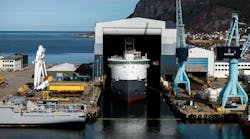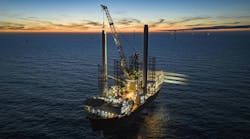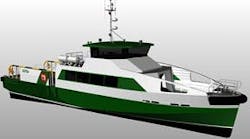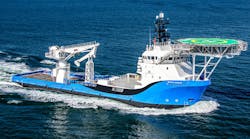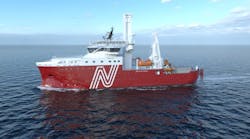The world's marine stimulation vessel fleet increased in number and shifted geographically in late-1999 and early-2000. Improvements in measurement and realtime monitoring systems dominated upgrades and new-build vessels in the marine stimulation vessel market.
Realtime communication capabilities, especially, received a lot of focused attention in the past year. New fluid engineering designs continued to decrease the amount of product required for conventional completion practices.
World distribution
The world fleet increased 23% to a total of 27 vessels. Once again, the distribution was concentrated in the Gulf of Mexico, an area that contains almost 60% of the total world fleet. The remainder of the fleet remained deployed in South America, North Sea, the Middle East, and West Africa. West Africa, South America, and the Canadian North Atlantic regions were listed last year as the areas of best future growth potential.
The highly anticipated push into deeper Gulf of Mexico waters appears to have changed this reasoning. The fleet there grew by 33% to a total of 16 vessels. South America also attracted four vessels, an increase of 33%, operating off its coasts.
The move to larger vessels continued into 2000. The increased demand by national and international governing bodies for better environmental performance encouraged continued development of more environmentally friendly fracturing fluids.
Station maintenance and storage capacity continued to be subjects of interest as well. The more remote nature of deeper operations has resulted in further distance for re-supply, vessel maintenance, and increased travel time between rigs and platforms. Optimization of onboard systems and materials has been the key to maintaining efficiencies and competitiveness in this "spread-out" market.
Fleet analysis
Average vessel size increased this past year. Analysis of survey information reveals the average vessel length increased to 231 ft. About 41% of the vessels were greater than this average. Average engine horsepower increased 16% to 3,780 hp. Cruising speeds still average about 12 knots.
As in the 1999 survey, there are noticed differences in the storage/tankage philosophies between vendors. Acid, additive, and gas storage capabilities, above and below deck, dominate this difference. Wide variation in above-deck storage capabilities is evident. Although there are differences in storage/tankage proportionment, one thing is common to all of the new vessels in this year's survey - more total storage capability.
"Gel-on-the-fly" mixing capability increased 16% to a 77% share of vessels in the survey. Average fracture-pump hydraulic horsepower increased 8%, to 8,500 hhp (hydraulic horsepower) with six vessels having greater than 10,000 hhp. The average number of pumps per vessel remained between five and six, with five vessels having eight or greater.
There was a net increase of five vessels in the worldwide fleet. Recent construction trends continued to lean toward new-design boats over retro-fitted existing vessels. Four of the five survey participants commissioned new boats in the past year. These new, bigger vessels played a key role in the increased capability numbers mentioned previously.
A new player, Baker Oil Tools, entered the marine stimulation vessel market in late 1999, commissioning two boats, the RC Baker and Republic Tide. Halliburton commissioned the Stim Star II, OSCA re-commissioned the Elkhorn River, and Schlumberger commissioned the DeepStim, with the DeepStim II to be commissioned 3Q-2000.
Surprise and forecast
The biggest surprise of this year's survey was the lack of activity in West Africa. This region's "boom" isn't far enough into well construction projects to generate a lot of stimulation service demand. It's a good bet that this will change in the coming one to two years, and result in an increase and/or shifting of the world's fleet to that region.
Acknowledgement
The following contributed to the compilation of Offshore's 2000 Global Marine Stimulation Vessel Survey: Brenda Sharpe, Baker Oil Tools Scott Strittmatter, BJ Services; Walt Glover, Halliburton Energy Services, Jim Tycer, OSCA; and Leo Burdylo, Schlumberger.


